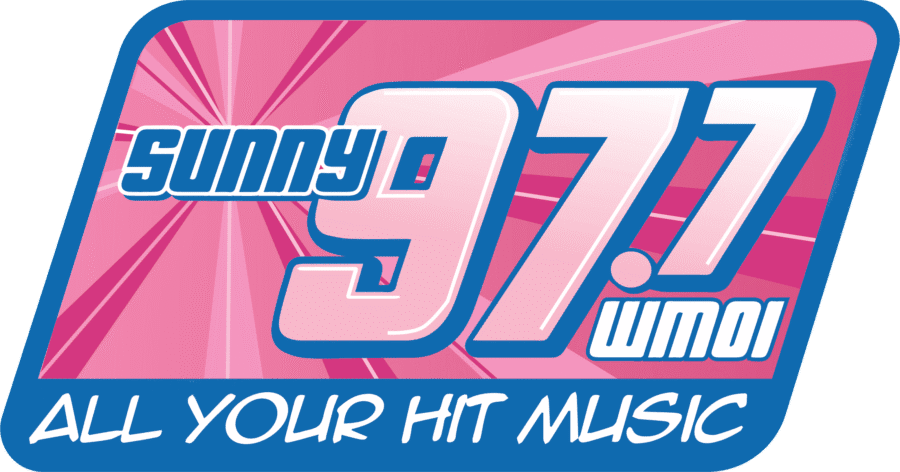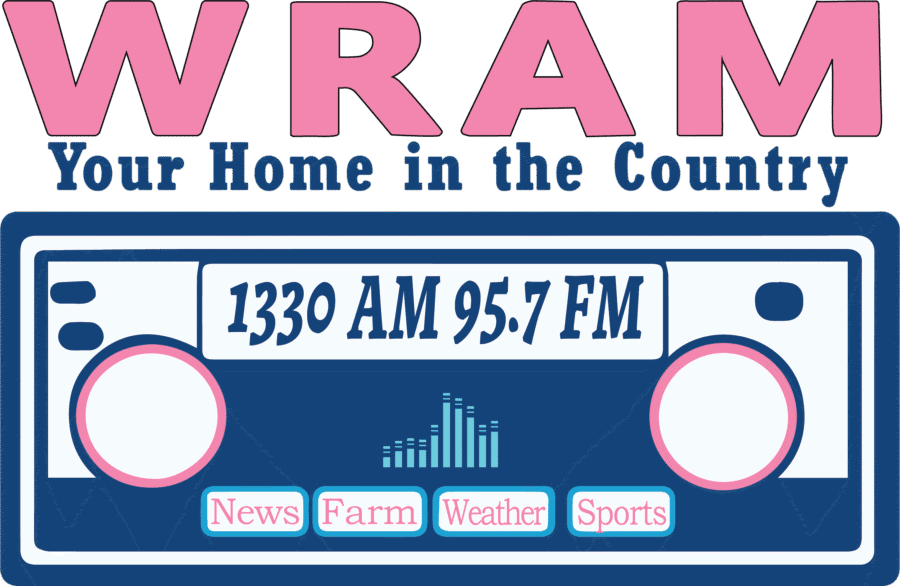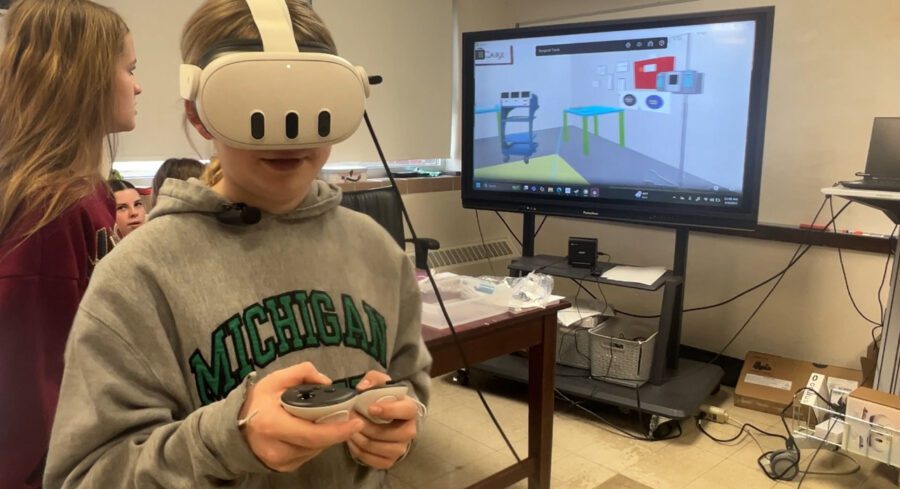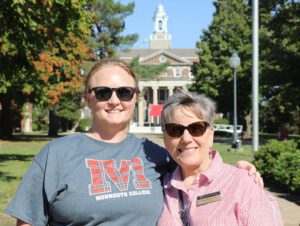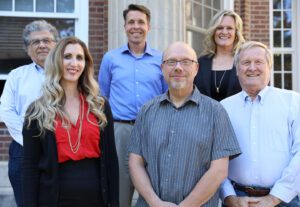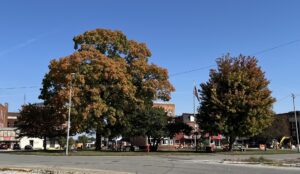Payton Glinkski watches TV medical shows with her mom, but she never thought about a career in medicine because she doesn’t like, as she puts it, “blood and guts.” But, with a virtual reality (VR) controller and headset she learned not every job in health care has a potentially gory element.
“I just knew there were nurses, doctors, dentists and social workers but it kind of went into more depth into every part of what a doctor does or (what) everyone in a hospital does … all the workers.”
A two year-collaboration between OSF HealthCare, LaSalle County government, and the Regional Office of Education District 35 in North Central Illinois included design, equipment installation and training, led by OSF STEAM, under the umbrella of OSF Innovation. Healthcare Careers 360, a web-based application, and the EnduvoVR Career Explorerremove barriers and allow middle school students to explore a wide variety of health care careers.
OSF I-80 Innovation Hub Director Zack Vankeulen of OSF HealthCare explains the web-based app and VR offers immersive learning in health care settings that would otherwise be off-limits to students due to federal privacy and safety regulations.
“An observer isn’t allowed in the emergency room or in the operating room (OR) so they can’t learn about those careers as well as some of the other areas (outside of health care) that they have access to. So, by creating this virtual reality environment the students are immersed right in the middle of an OR during a surgical case and they’re able to do as close to hands-on experiences they can without actually being in the room.”
Gamified learning
While some students used the VR headsets and worked in such careers as surgery technician, dental assistant, or an emergency medical technician, other students worked on computers playing games to identify and learn about items in medical settings. For example, Brooklyn Verda showed how she found a pressure washer in a biomedical engineering lab. Kids also had to find a bonus ‘lucky pickle’ and then watched videos about the environment and career they were exploring.
Verda liked the gamified learning and didn’t find it too challenging
“I didn’t really have any difficulties. It was pretty fun and easy to do. But other than that, it was really cool.”
Vankeulen says OSF targeted careers that are hard to fill in rural communities such as Earlville, Mendota and Ottawa.
“So, we focused on those, mainly, as well as the large volume careers such as nursing and dental hygiene, which you wouldn’t think traditionally is an OSF career, but we recognize the need and included that as well.”
The collaboration for STEAM programming picked up steam when state lawmakers enacted Illinois PaCE, which requires school districts prepare students in grades 6-12 for a career or technical education pathway by introducing them to opportunities for a wide variety of high-skill, high-wage or in-demand career fields. It also requires high schools to implement College and Career Pathway Endorsements or opt out of implementation by July of this year.
ROE 35 Superintendent Chris Dvorak says he would love to continue the collaboration and possibly expand the career opportunities included in the programs. Additionally Dvorak says, “The ROE will hold future professional development opportunities that will allow teachers to share thoughts, ideas, and successes as we continue to support STEAM implementation.”
Earlville Junior High Principal Jenette Fruit has a philosophy that small schools can do big things and collaboration is key. Even if the technology brings a new challenge, Fruit says, students readily embrace it.
“And they will figure it out and they like being able to explain what they did to solve the problem. And I think that comes with this too. I didn’t know about the boundaries. I didn’t know about the different things with the VR and they’re like, ‘No Mrs. Fruit. This is what you have to do, and this is why.’ And kids just like to know how to solve stuff. We just have to put it in their hands.”
The ‘boundaries’ she references are the areas within the sterile environment in an operating room. Those are the kinds of concepts students are learning as they experience surgical procedures, patient interactions and medical decision-making in a simulated environment that mirrors a real hospital and clinical setting.
Science teacher Kristen Sweeney says for a small, rural school district it’s rare that students would have exposure to using VR headsets.
“To be able to work with equipment like this, that they just aren’t going to be able to because they just can’t afford these types of systems, so it’s so valuable to be able to have that in the school system for them.”
Next steps
OSF STEAM builds programs to help students see how their skills and interests align with potential careers, encouraging them to pursue further education and training. In fact, Sweeney says the next steps for students include using another OSF STEAM-designed web-based app called healthcareers.guide.
It will allow them to explore more deeply one health career including such things as duties during a typical day and of course, salary.
“They always want to know how much they’re going to make so we’ll be looking at what the average pay is for those positions, and we’ll actually have them create a resume and a cover letter as if they were sending it off to OSF.”
And that’s what it’s all about. Getting the next generation ready to fill the significant shortage of health care positions, not only physicians, nurses and vital staff, but the many important support roles. Without a strong pipeline, patient care and access to quality medical services could be in jeopardy, particularly in rural and underserved areas.
Schools interested in partnering with OSF for STEAM programming, can contact events@jumpsimulation.org.
***Courtesy of OSF HealthCare***
